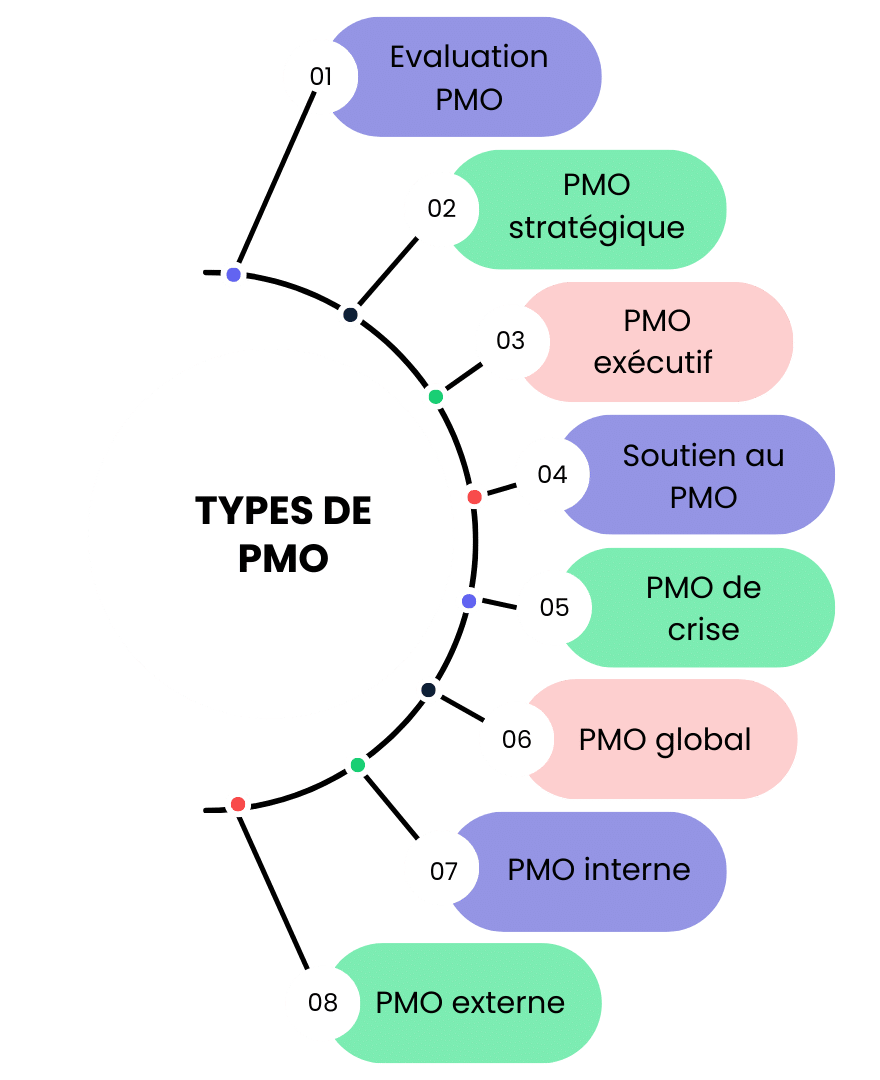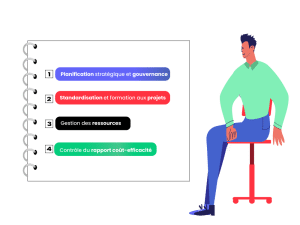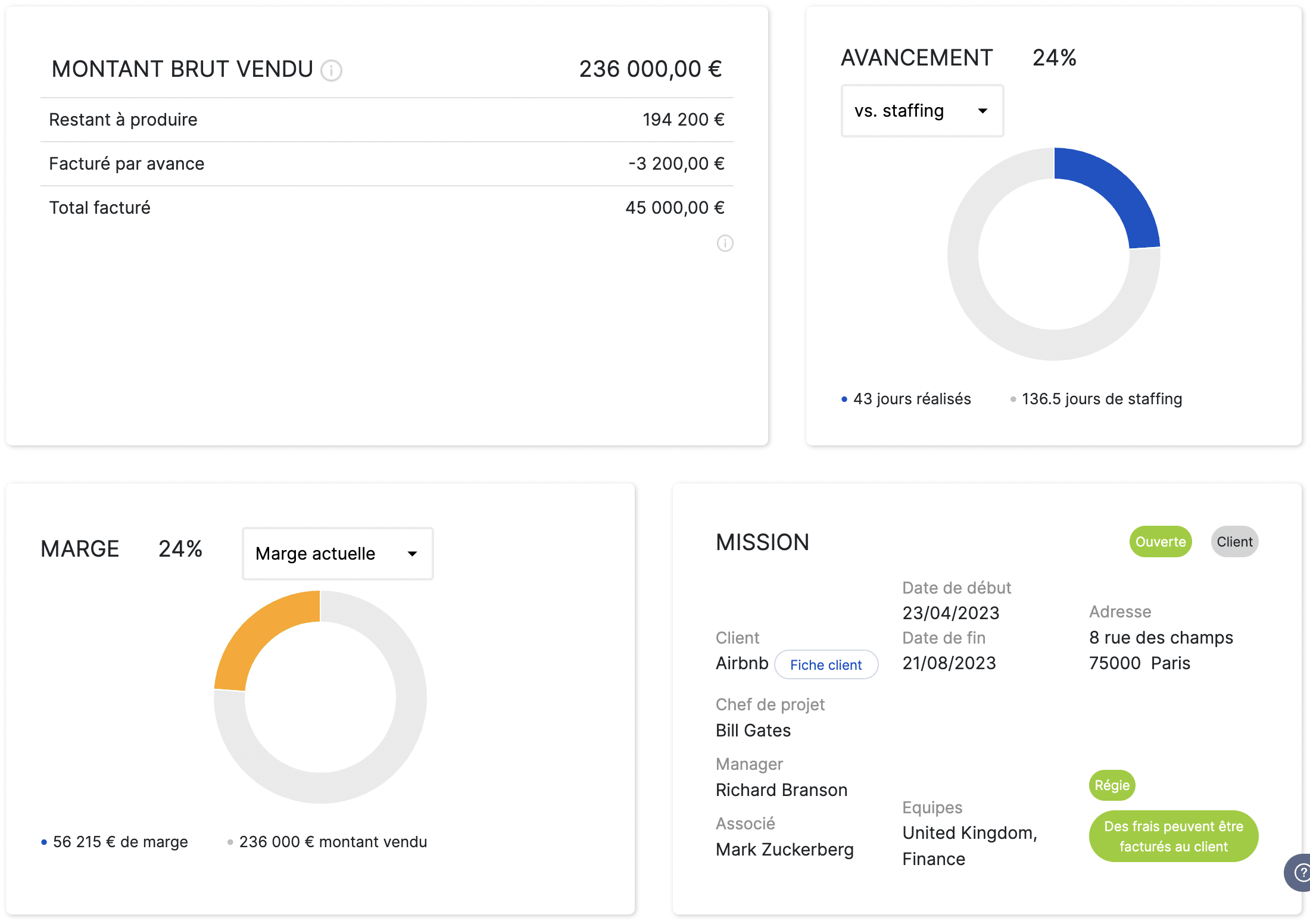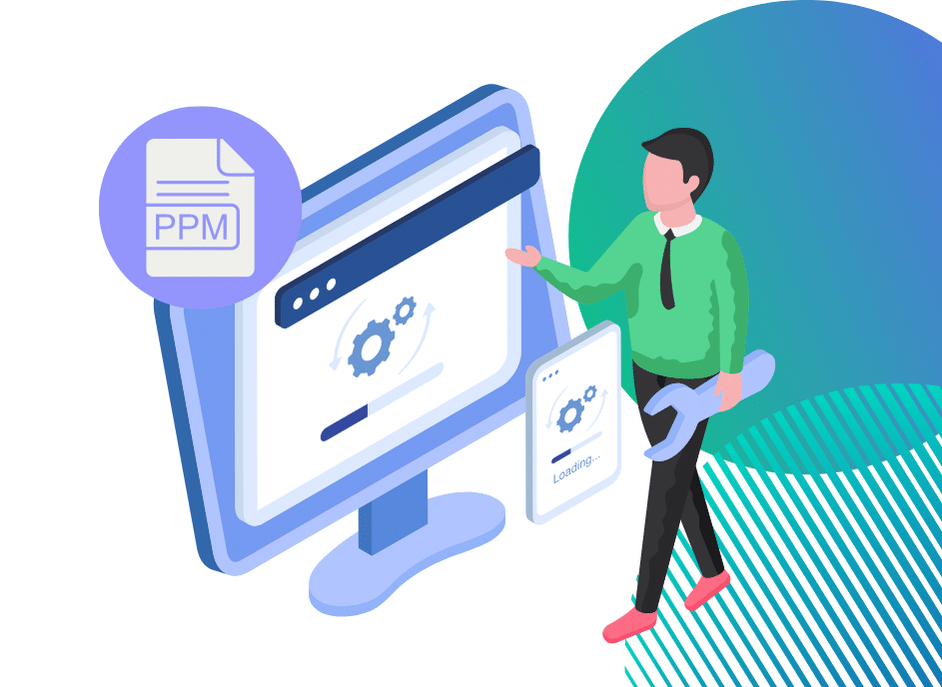Project Management Office: The Ultimate PMO Guide

A PMO or Project Management Office is an entity responsible for planning and organizing projects in order to maximize their profitability.
In this article, we'll define what exactly a PMO is and what other meaning is behind these acronyms.
Learn about the different types of PMOs, their goals, and the tools to maximize the efficiency of all their processes to become a real value entity in the business environment.
What is a Project Management Office or PMO?
PMO: definition
The acronym PMO refers to both the project management department as a whole and the person who is responsible for it.
In the first case, the acronym isthe Project Management Office and in the second, the Project Management Officer.
Therefore, we can define these concepts as the department or person responsible for ensuring that project management is carried out efficiently and optimally, in relation to the set objectives.
What is the difference between a project manager and a PMO?
The project manager is the person who sets the goals and provides the resources to achieve them.
The PMO is responsible for managing its resources effectively, by setting up an organization that improves the KPIs initially established.
What are the different types of PMOs?
There are up to eight different types of PMOs.

- Assessment PMO
This is the office or person responsible for monitoring a project.
It monitors key KPIs to alert if there is a risk of non-compliance of any of them.
- Strategic PMO
Based on the above information, the most appropriate strategic and organisational decisions are taken to correct the deviations likely to lead to non-compliance with the objectives set (projects to be prioritised and prioritised, skills and human resources to be targeted and recruited, pricing to be adjusted, etc.).
- Executive or Control PMO
This is the office or person responsible for ensuring that all defined settings and policies are applied appropriately.
He ensures compliance with the rules and reports any incompatibilities that may affect the execution of tasks as planned.
- PMO Support
It is about providing support in any part of the project. Whether at the strategic level or at the level of monitoring, re-organization of resources or any other issue that needs to be strengthened for the achievement of objectives.
- Crisis PMO
This is a team or professional who specializes in crisis situations.
This type brings together characteristics of support, re-planning of resources, sources of funding, agile or scrum methodologies and any tool that facilitates the rapid resolution of situations that may jeopardize a project.
- Global PMO
This is an office or person that encompasses some or all of the functions described above.
If the structure is sufficient, an overall PMO would be the top of the hierarchical pyramid. This is where all the parameters on which the previous types of PMOs depend are overseen, with the aim of coordinating them while maintaining the company's values and ensuring that the main common KPIs are met.
- Internal PMO
Depending on the size of the company or the volume of projects, management offices can be a department in their own right within organizations.
- External PMO
These are project management consulting firms that can provide their expertise as suppliers on a recurring or ad hoc basis.
The Role of a Project Management Office
In order to determine the functions of a project management office, it is important to know the key metrics to measure the success of your projects.
Based on these indicators, we can establish the following functions:

Strategic Planning and Governance
The first of these functions is strategic planning and governance in order to choose the right projects. The company's strategy, vision, and values must be considered, as well as the resources actually available.
An obvious but enlightening example: a PMO will not be able to take on a job that requires 25 programmers if it only has 10 and cannot handle the remaining volume of recruitment.
Knowing how to say no to certain projects, due to doubts about their profitability or because they are not aligned with the company's culture, is also a function that the PMO must fulfill in this section.
Standardization and project training
The project management office must also train its human resources to equip them with the knowledge, tools, and processes necessary to achieve the objectives.
Resource Management
PMOs will need to manage human and technical resources to increase efficiency and productivity.
It is a question of planning and allocating the human resources available in the most efficient way possible. And to establish a schedule of tasks and processes that allows workflows to be replicated as originally planned, in order to align with the set objectives.
Cost-effectiveness monitoring
Finally, the PMO must ensure the profitability of his project portfolio. He or she must constantly monitor deviations from the initial budget.
This is to ensure that the project you are working on will not only be profitable on paper, but also in practice and that it will be delivered on time through project financial accounting.
PMO tools: essential characteristics
PMO software is a tool for managing projects as well as the project portfolio as a whole more efficiently. This management system makes it possible to centralize management, consolidate data and thus allow efficient management.
The challenges for companies around project portfolio management to which PMO software must provide an answer are diverse.
- Visibility: have real-time and predictive visibility on all consolidated data of the activity to better plan and anticipate.
- Human resources management: Holistic management across the project portfolio is needed to better allocate resources. With the context of the war for talent, the logic of engagement in the matching of projects and employees must be a key element.
- Responsiveness and adaptability: as the unexpected is always present, it must be possible for you to observe the deviations and the financial and operational impacts of the changes envisaged or planned in order to make better decisions
- Analysis: a PMO tool should give you the keys to understanding your projects, the reasons for successes and failures with good granularity.
- Collaboration and confidentiality: a PMO tool is a real mediator of information and decision-making: it must provide the right level to each employee.
- Simplicity and automation: The PMO tool should save you time by eliminating repetitive tasks, standardizing and speeding up operations with workflows.
Real-time visibility and collaboration
A first essential element for a PMO tool is to deliver information in real time and with adequate levels of access and therefore rights.
The visibility that a PMO tool provides lies in its ability to consolidate information in real time.
One of Stafiz's strengths is its power Consolidate all project data : revenues, costs, but also tasks and project phases, invoices, etc. This gives you visibility into forecast data, such as margin, which is recalculated in real time until the end of projects.
Our secure CLOUD hosted in France provides you with all the guarantees of protection of your data. For more information, see our data protection page.
Project definition: budgeting and planning
The definition of project budgets is the first essential functional building block for a PMO tool. This brick should allow you to cost and plan your projects in order to verify and validate its financial and operational viability.
This budget will serve as a benchmark for the continuation of projects under direct management.
Stafiz responds to the key issues of this phase by remaining flexible:
- taking into account all costs and revenues (rebillable or non-rebillable expenses, etc.);
- budgeting according to your operation: grades, people, tasks or phases;
- scripting from the commercial opportunities and their quotes (pre-resource planning…).

Example of a budget with detailed production plan in Stafiz
Resource Management
Resource management is the heart of your service company: managing resources from a strategic point but also from an operational point of view.
At the strategic level, a PMO tool will have to manage capacity in forecasting, i.e. meet the needs of the company (demand) with relevant and available talent (supply).
It will also be necessary to manage the operational aspect, i.e. the planning and organisation of the load with flexibility. To ensure good management, indicators such as utilization rate must be clear and available.
Stafiz offers all these features and more. Resource capacityplanning enables you to organize your needs - i.e., your profile searches for your entities/BUs - in a collaborative way.
Your employees can indicate their interest in a mission or to work on a given skill directly on the interface. Finally, our algorithms present you with the most suitable profiles based on your criteria: skills, appetites and availability. Efficient and fast.

To anticipate your resources, keep an eye on your capacity forecast with dedicated reports:


Learn more about the resource planning with Stafiz
On the operational management side, resource allocation is simple and fast in Stafiz.
You can staff, shift, modify and transfer schedules easily. This gives you a clear and always up-to-date view of the workload to better allocate your employees.

Finally, the reports allow you to track the utilization rate By team, employees, zones or any entity of your choice: all this is fully customizable.


Progress and performance monitoring
Monitoring progress and performance is one of Stafiz's differentiators and strengths. The teams can follow, with the right degree of confidentiality, the progress but also and above all the financial impacts of the current situation of the project, including in forecasting.
Empower your project managers and field teams to deliver your projects on time and on budget.
You benefit from general key indicators and in-depth views in order to analyze progress by employee, tasks or phases, grades, etc. Identify deviations from the initial plan at a glance, in addition to being alerted by email.

Discover project management in Stafiz
To go further, analyze your data in depth: visualize your data by tasks/phases, grades, employees, etc.
Identify your leftovers and adapt if necessary: modify your resource planning, renegotiate with your client, cost your projects more accurately... You have the decision-making tool you need.

The plus that makes the difference
Automatically trigger your invoices when tasks are due with Stafiz.
Strategic reporting and project portfolio monitoring
Finally, a PMO tool must provide a consolidated and cross-functional view of your project portfolio: it must make it possible to monitor the profitability and risks weighing on your portfolio.
This will allow you to better select your projects and make better management decisions on a daily basis.
On the reporting side, Stafiz's strength lies in being able to consolidate all revenues and costs (resource planning, purchases, subcontracting, fees etc.) and to be able to track them by projects, phase/tasks, teams or collaborators, grade: completed vs. budgeted, utilization rate and production, income statement, billing statement...


Stafiz does your pre-accounting by having all your data ready for export on your accounting software.


